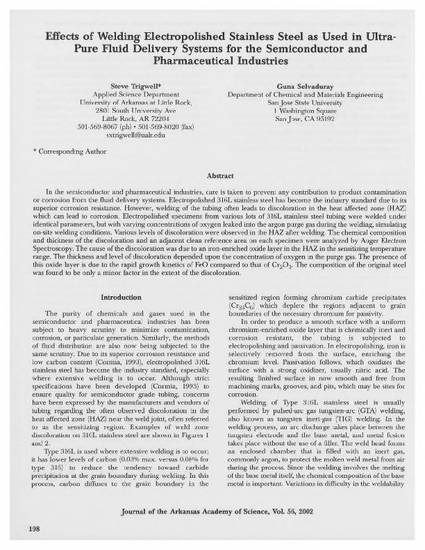
In the semiconductor and pharmaceutical industries, care is taken to prevent any contribution to product contamination or corrosion from the fluid delivery systems. Electropolished 316L stainless steel has become the industry standard due to its superior corrosion resistance. However, welding of the tubing often leads to discoloration in the heat affected zone (HAZ) which can lead to corrosion. Electropolished specimens from various lots of 316L stainless steel tubing were welded under identical parameters, but with varying concentrations of oxygen leaked into the argon purge gas during the welding, simulating on-site welding conditions. Various levels of discoloration were observed in the HAZafter welding. The chemical composition and thickness of the discoloration and an adjacent clean reference area on each specimen were analyzed by Auger Electron Spectroscopy. The cause of the discoloration was due to an iron-enriched oxide layer in the HAZin the sensitizing temperature range. The thickness and level of discoloration depended upon the concentration of oxygen in the purge gas. The presence of this oxide layer is due to the rapid growth kinetics of FeO compared to that of C^C^. The composition of the original steel was found to be only a minor factor in the extent of the discoloration.
Available at: http://works.bepress.com/guna_selvaduray/28/
